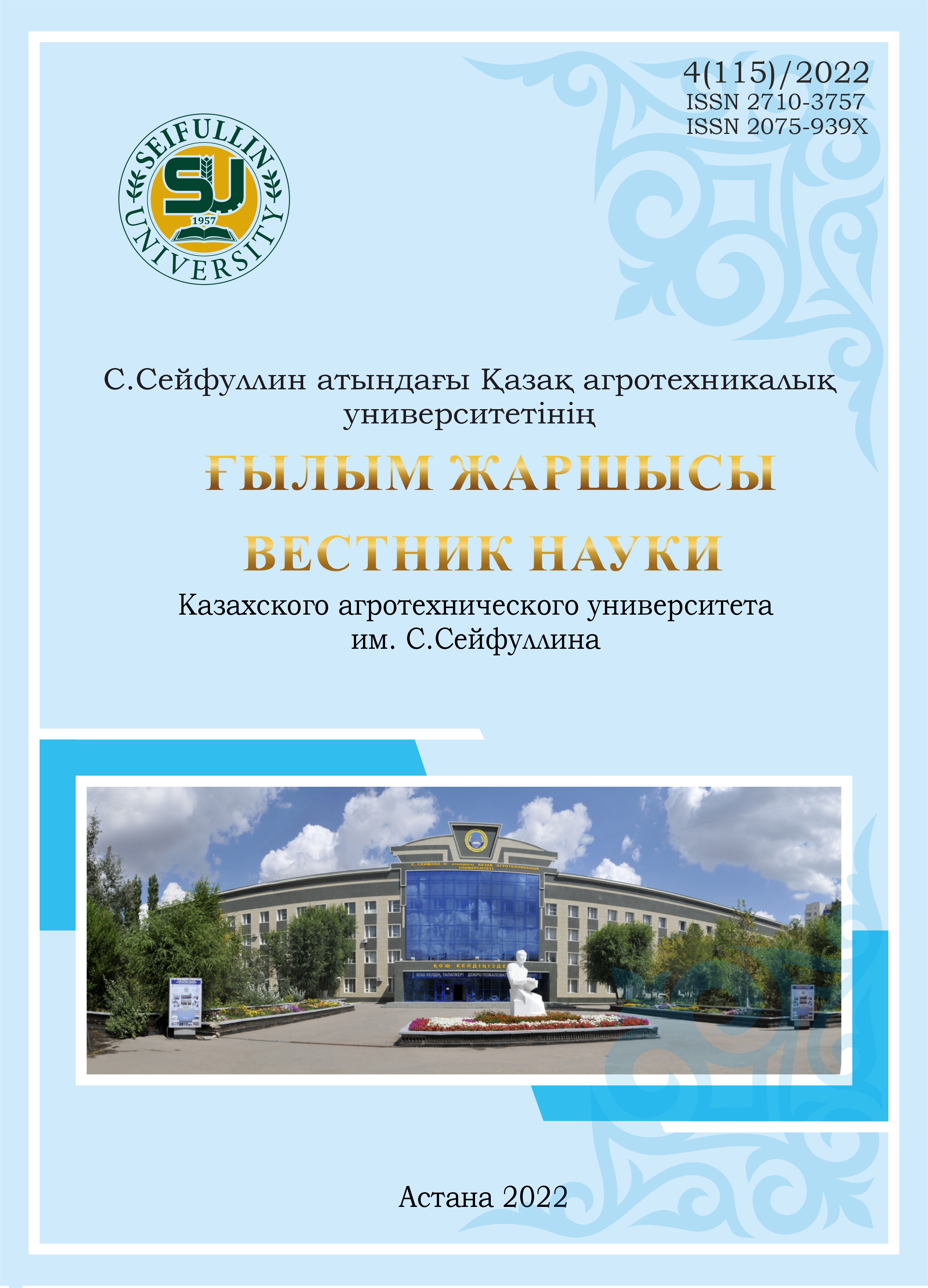THE INFLUENCE OF AGROTECHNOLOGIES ON THE AGROECOLOGICAL STATE OF AGRICULTURAL LANDSCAPES
agrolandscape; soil cultivation system; productivity; zero tillage system; minimal processing system; soil moisture; agricultural technology.
DOI:
https://doi.org/10.51452/kazatu.2022.4.1223Keywords:
agrolandscape; soil cultivation system; productivity; zero tillage system; minimal processing system; soil moisture; agricultural technology.Abstract
The article presents the results of a study of the mechanisms of influence of spring wheat cultivation technology on changes in soil fertility and the influence of tillage methods on the productivity of agricultural landscapes. A comparative assessment of the water physical properties of the soil, the productivity of spring wheat, depending on the main methods of tillage, is given. Humidity indicators on the stubble predecessors were 11.6 16.2 mm higher than for steam. The reserves of productive moisture in the soil for the steam predecessor have an indicator of 33.4 mm, which is more than for the stubble predecessor. In the studied agrotechnical variants, the height of the snow cover and the water reserves in the snow prevailed in the minimum treatment system. There were no noticeable changes in snow density by technology. In the southern chernozems, before sowing spring wheat, the content of nitrate nitrogen in the 0-40 and 0-60 cm layer was 13.8-18.2 mg/kg. The yield of spring wheat in the system of minimal soil treatment for stubble and steam precursors shows good results. The yield was 27.1 c/ha for the steam predecessor, 26.3 c/ha for the stubble.

